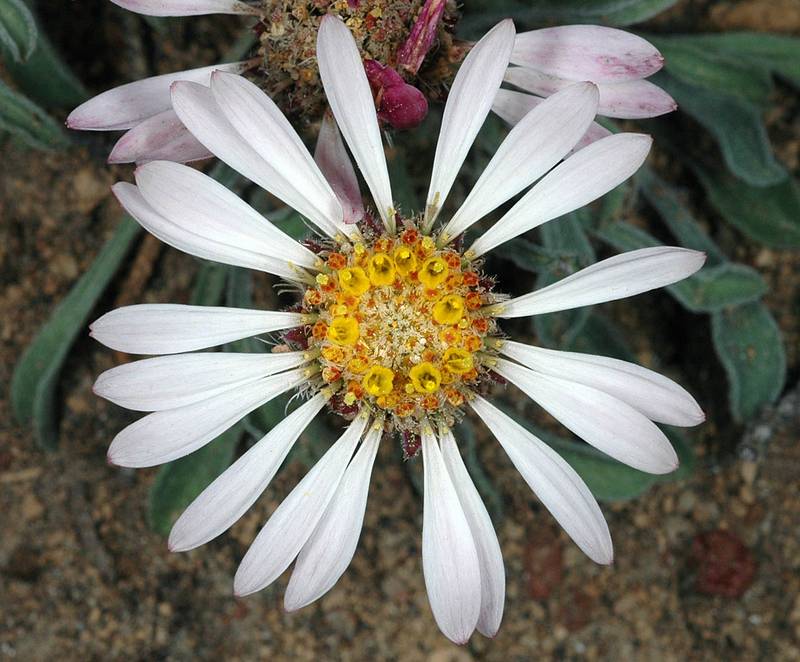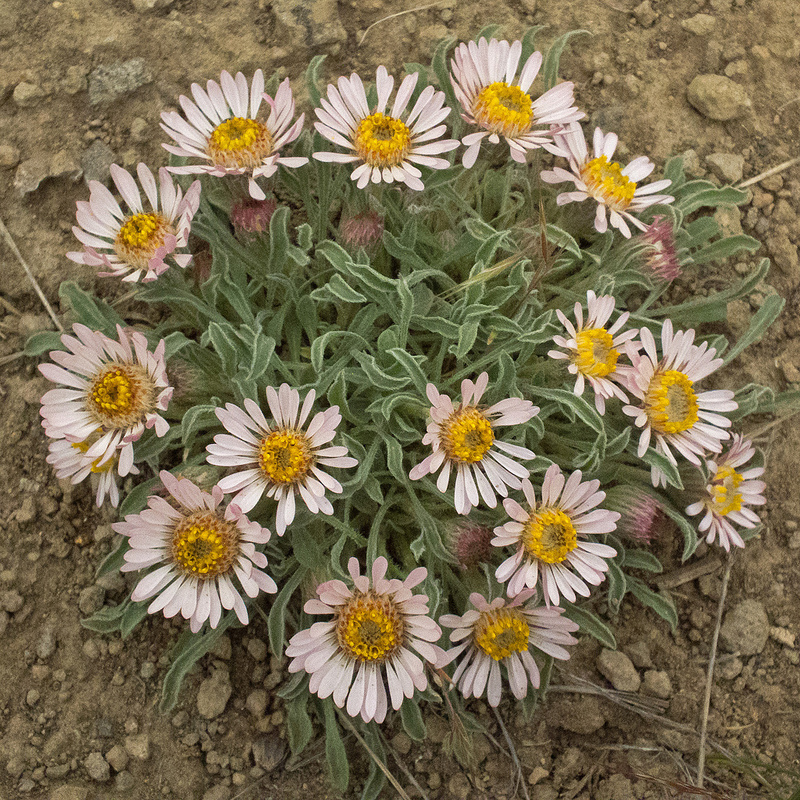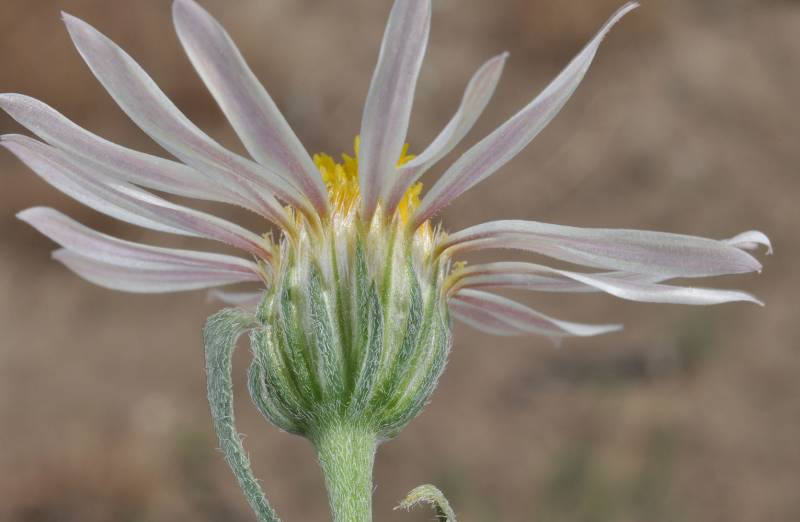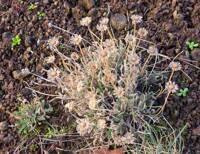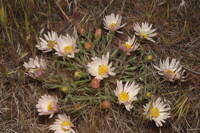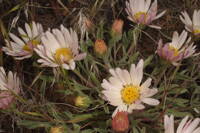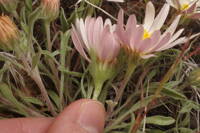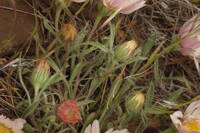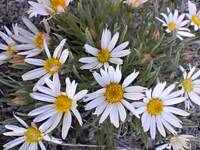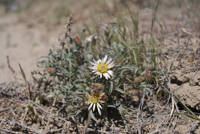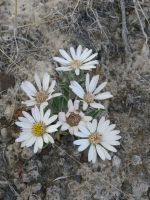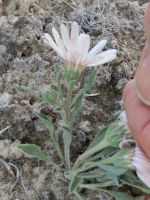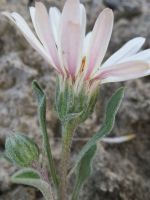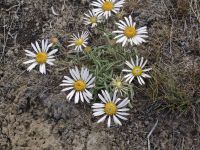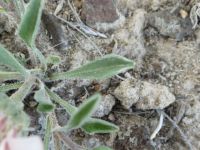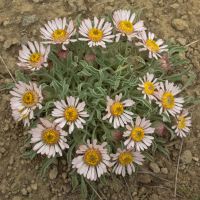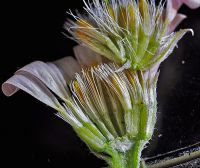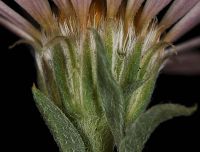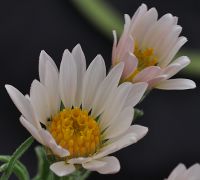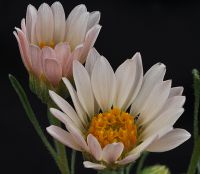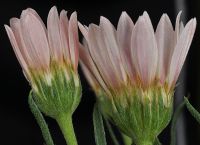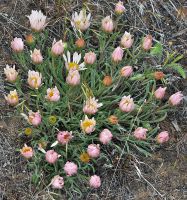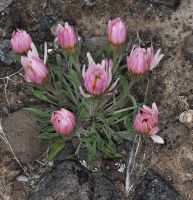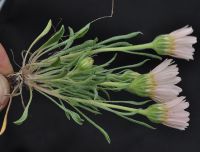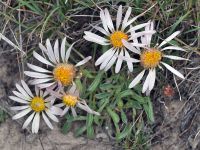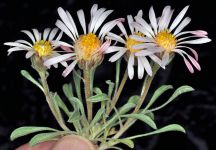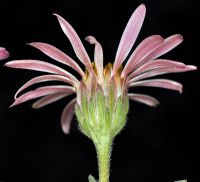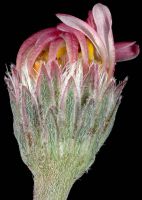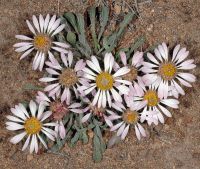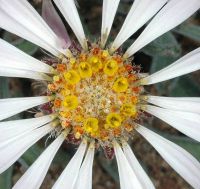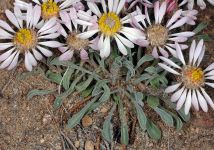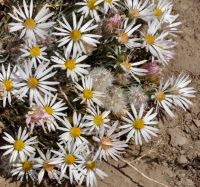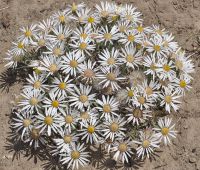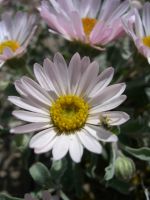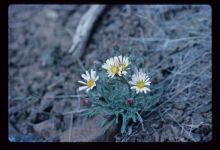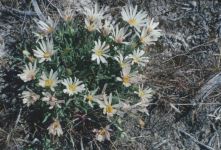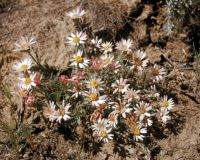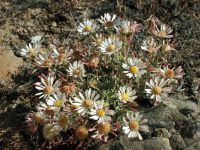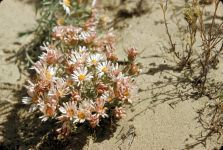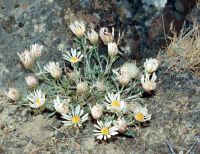Distribution: Occurring east of the Cascades crest in Washington; Washington to Oregon and Nevada, east to Montana, Wyoming, and Utah.
Habitat: Dry-open places in the plains and foothills, often with sagebrush.
Flowers: May-July
Origin: Native
Growth Duration: Perennial
Conservation Status: Not of concern
Pollination: Bees, flies, beetles, wasps
Annual, biennial or perennial from a persistent base, the several stems lax and often branched, 5-15 cm. long.
Basal leaves tufted and persistent, spatulate or spatulate-obovate, 2-6 cm. long and 3-11 mm. wide, the cauline similar or reduced.
Heads solitary on each stem, or several on robust plants; involucre 7-10 mm. high, the bracts somewhat imbricate, narrow, pointed, with a green central stripe and fringed margins; rays pistillate and fertile, light pink to nearly white, 7-12 mm. long; disk flowers perfect, numerous, yellow; pappus of the disk flowers a single series of numerous, rigid, narrow, barbellate, bristle-like scales, that of the ray flowers similar but reduced.
Achenes flattened, 2-nerved, with loose, short hairs.
Publication: Proc. Amer. Acad. Arts xvi. 84. 1880.
Townsendia florifer (Hook.) A. Gray var. florifer
Townsendia florifera (Hook.) A. Gray var. watsonii (A. Gray) Cronquist
PNW Herbaria: Specimen records of Townsendia florifera in the Consortium of Pacific Northwest Herbaria database
WA Flora Checklist: Townsendia florifera checklist entry
OregonFlora: Townsendia florifera information
E-Flora BC: Townsendia florifera atlas page
CalPhotos: Townsendia florifera photos

